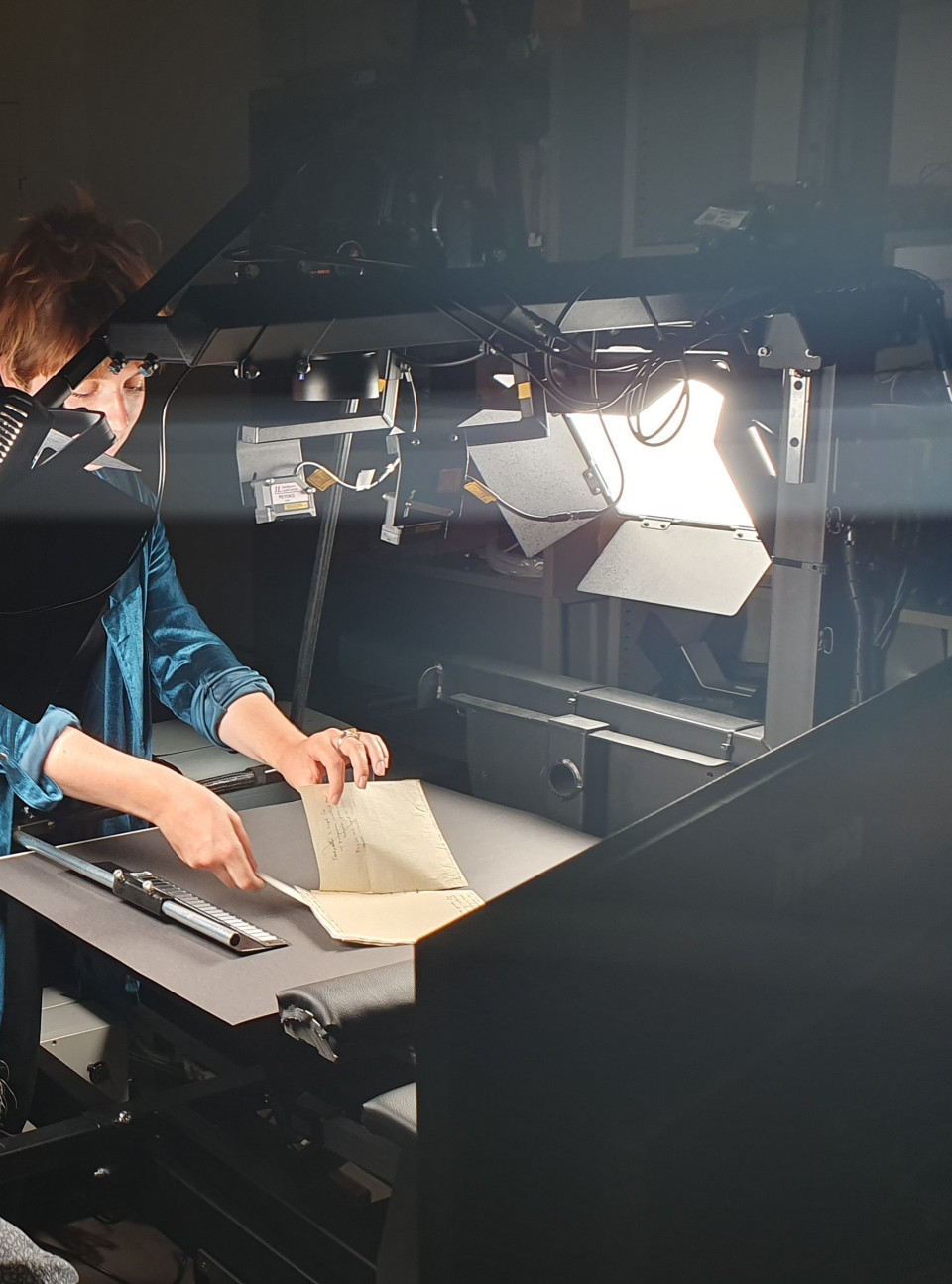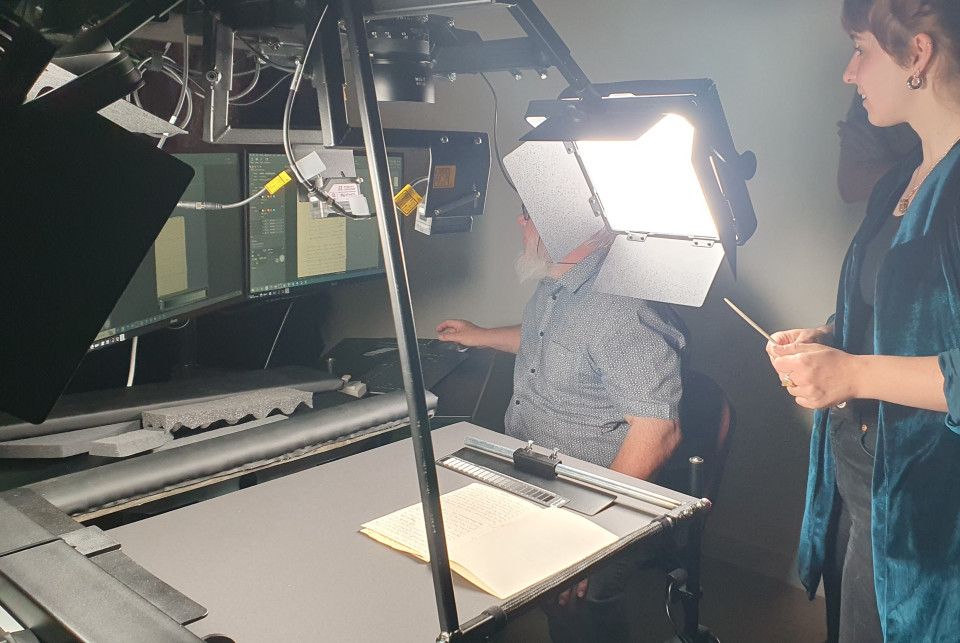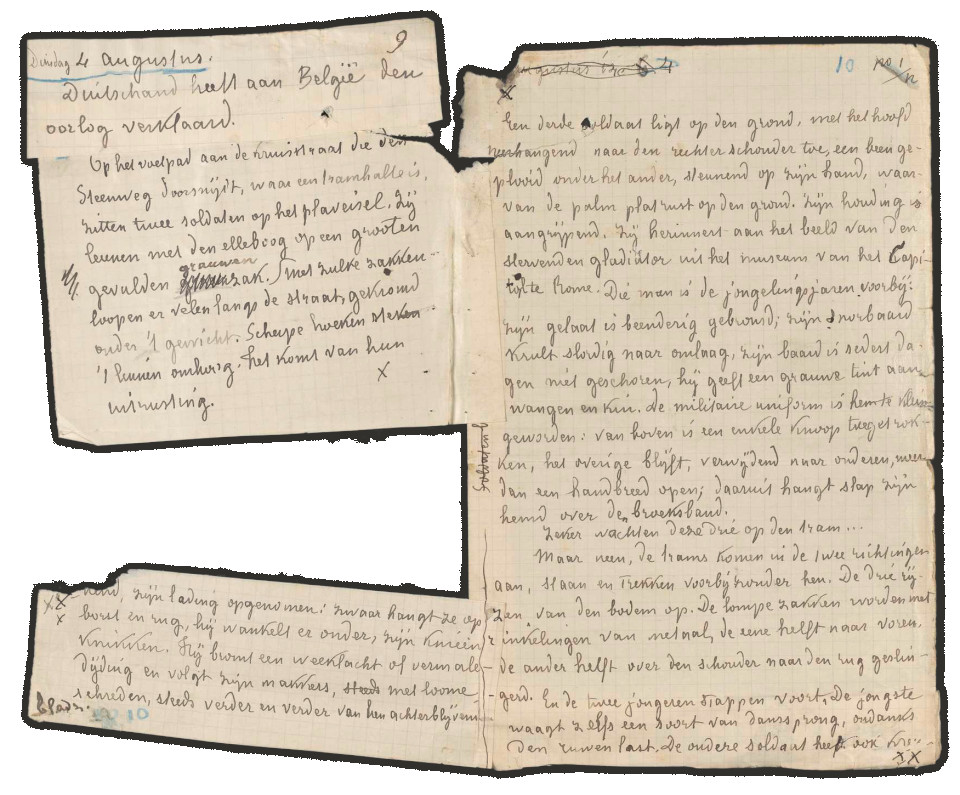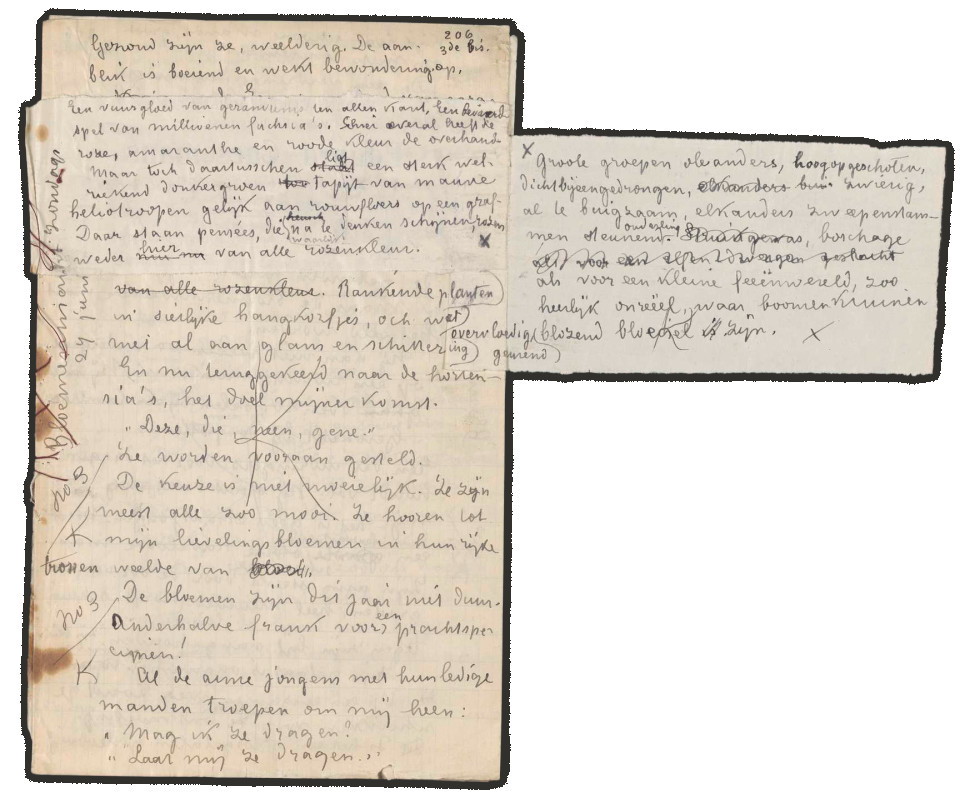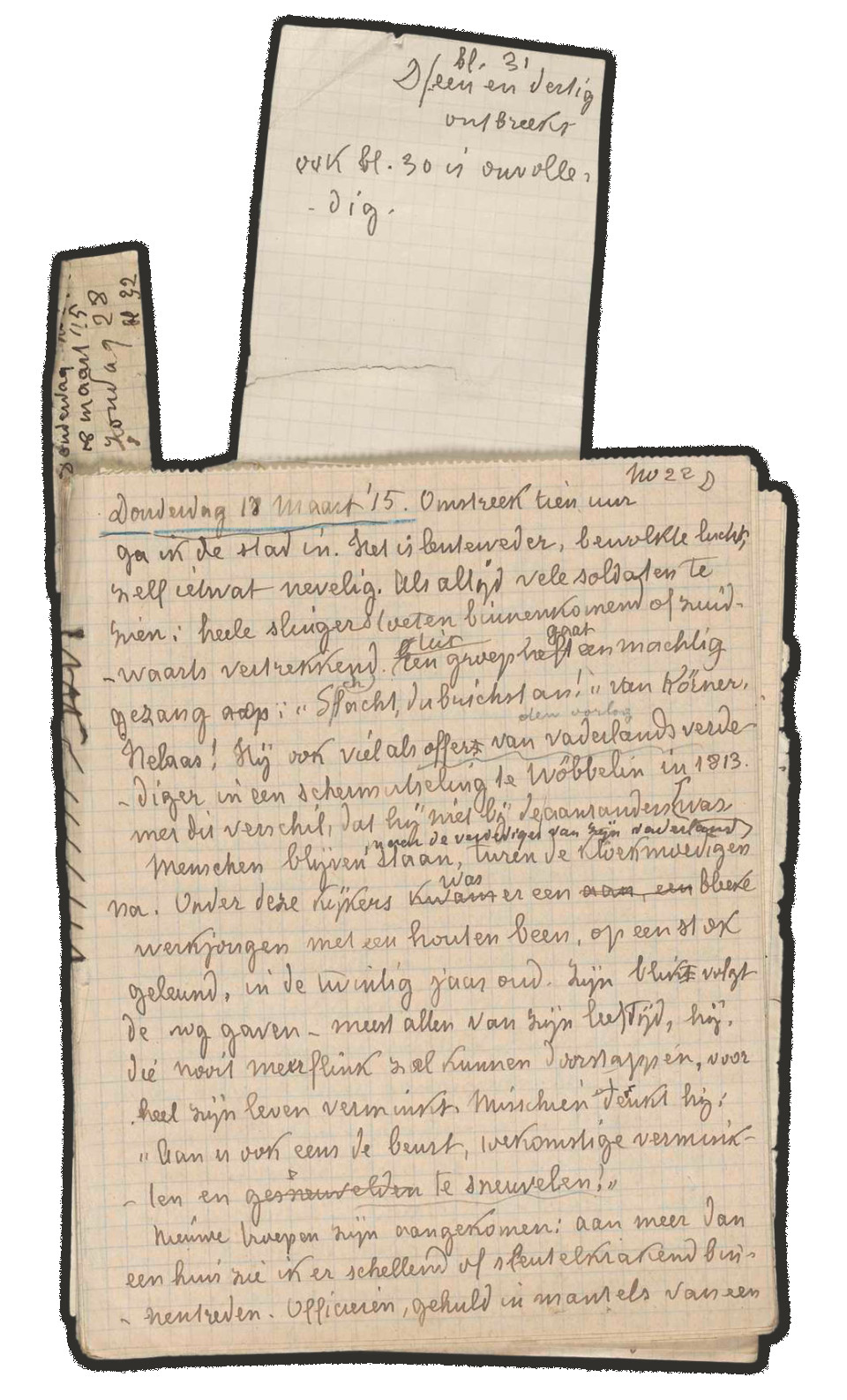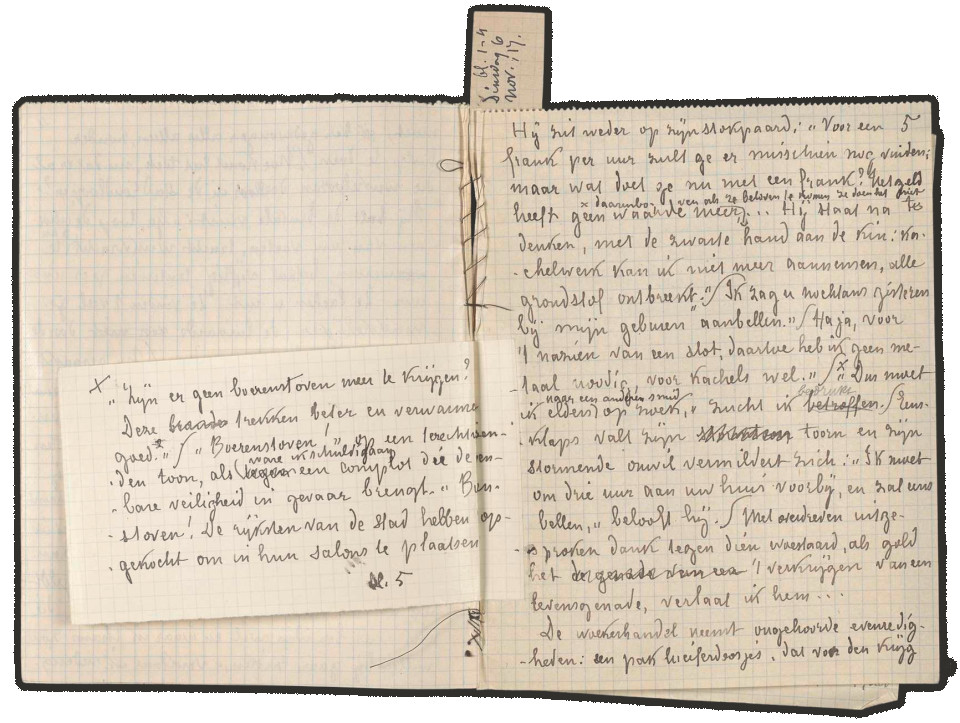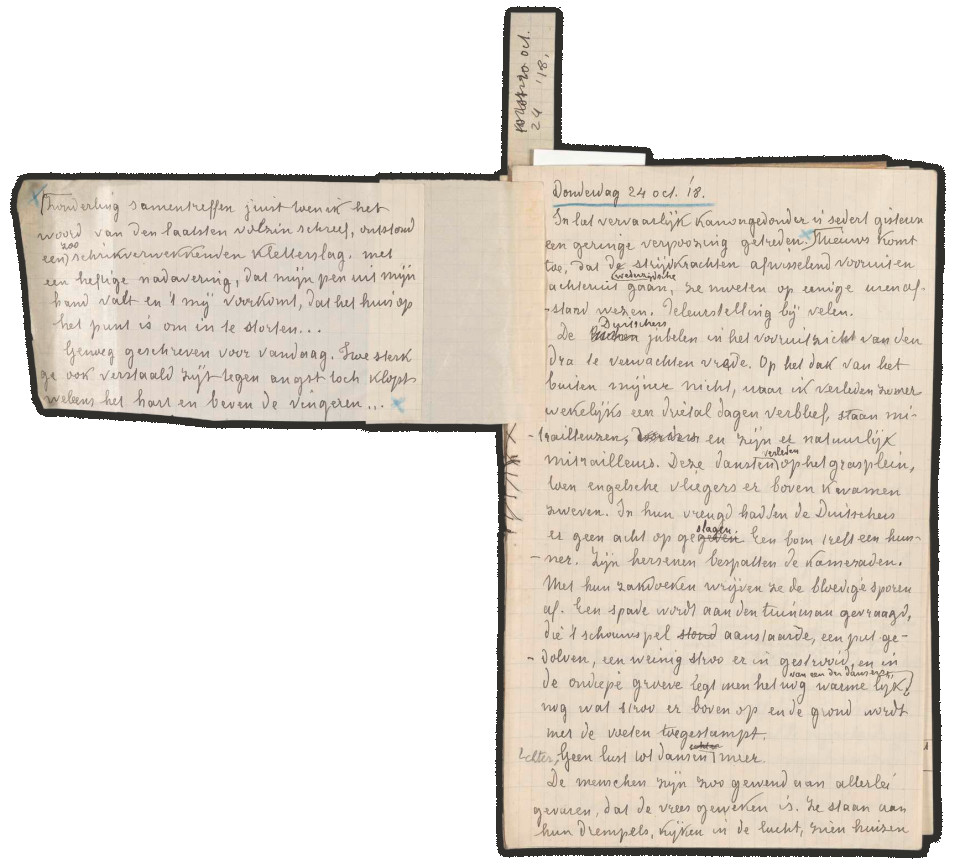A digital war diary: 4,000 images for the future
At the end of 2014, Virginie Loveling's war diary 1914-1918 was recognised as a Flemish Masterpiece. With the Masterpiece Decree, the Flemish government aims to protect and safeguard rare and indispensable cultural heritage in Flanders. The motivation for recognising the war diary remains relevant. The diary is a rare ego document by a female author, as an enduring indictment of war madness for new generations. The manuscript is an important testimony to the war years in Ghent and its surroundings, to general-human relations and daily survival in wartime. The diary is a tangible reminder of a great writer who compiled a monumental war diary 'at personal risk' that has been preserved in its entirety.
In 2023, meemoo, Flemish Institute for Archives, set up a digitisation project around Topstukken in Flanders. This was done with the support of the European Regional Development Fund and is part of the Flemish government's Flemish Resilience relaunch plan.
Within this project, the digitisation of some 40 masterpieces made of paper or parchment was also addressed, including Virginie Loveling's war diary. It is the only one in the list originating from the 20th century and written by a female author.
Digitisation by GMS
Although most of the diary was already published as text in 1999, a full digitisation of the work was delayed. The diary was written in the very complex context of the First World War. Recording the events of the war was forbidden and Loveling had to carry out her literary work secretly, hidden and on scraps of paper.
As a result, her war diary between 1914 and 1918 consists of hundreds of loose leaves, often sewn together by Loveling with thread. Writing was done on the back of order forms, of leaflets. Flaps of additional text or relevant newspaper articles were glued to the leaves, often adding to or correcting what she wrote down earlier. Bookmarks with the date, or wrappers were attached around a bundle, which she re-wrote full.
The complexity of the entire manuscript posed a major challenge in its digitisation. The physical manipulation had to be done with extreme care and by expert hands, due to the state of the paper, the fragile yarn, the glue and many unfolding pieces of text.
Parts of the manuscript
The result? 4011 different recordings, which will soon be digitally accessible to everyone. They are the starting point of exciting, (digital) projects and can further inspire researchers from different fields and interested parties.

